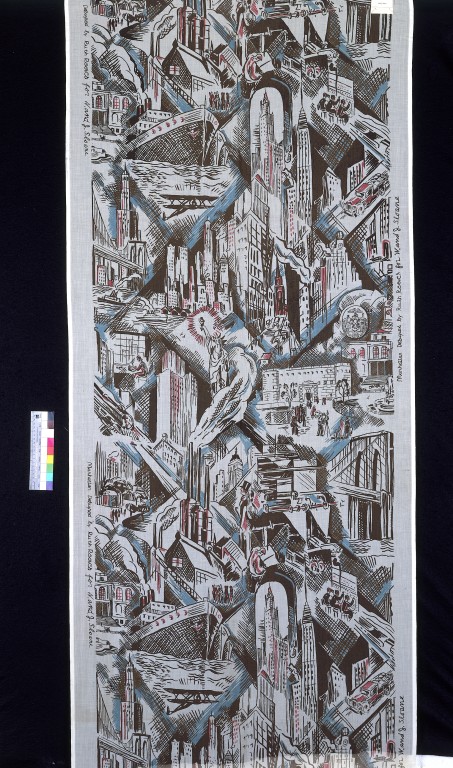Since the year of 1896, The Cooper Hewitt Smithsonian Design Museum has claimed and kept their reputation of being the only museum in the country that is particular to historical and contemporary design. Located on the Upper East Side of Manhattan, the museum has been open to the public showcasing the history of design and the creativity it holds with works that span from as long as 240 years. With that being said, a visit at least once is a must when entering and taking interest into any branch within the design field. I had the honor of visiting a second time and had the opportunity to appreciate the Jazz Age as they opened an exhibition exclusive to a time where the popularity of multi-media took a peak. With two floors full of architecture, interior design, fashion and music, the museum gives an insight into the chronology of fine art and its potential.
During my second visit, the entirety of The World of Radio display, for one, really caught my attention. Especially because I saw some very familiar devices such as the iPod Nano and the Google Home, I was intrigued by the communication of sound and its evolution. Displaying an array of physical radios, photographs and drawings, it provided an ultimate time traveling experience.
 Volksempfänger VE 301 DYN Radio, 1938
Volksempfänger VE 301 DYN Radio, 1938
In particular, it included the Volksempfänger radio that dates back from the 1930s designed by Walter Maria Kersting. Being approximately a foot tall, it was made with bakelite, a type of brown colored plastic designed to be affordable so that such technology could be as accessible as possible to consumers.

Freeplay Radio, 1996
A later radio dating 1996 was the Freeplay wind-up radio designed by Andy Davey, Gabby Clarke and Anne Gardener. Made from molded plastic and metal, this radio was invented purposely to communicate to areas of Africa, powered by a crank rather than batteries.

FR 600 Radio, 2008
Similarly in 2008, the FR 600 was invented specifically for emergencies without the need of batteries while using plastic, elastomer, metal as its medium. Though, its versatility allows for a walkie-talkie ability, a phone charger and a flashlight to name a few.

iPod Nano, 2009

Google Home, 2016
And finally, the most recent being Apple’s iPod Nano and the Google Home using smart technology for even more conventionality. The iPod provided the ability to download music to listen anywhere at any time and the Google Home encompassed interactivity by using voice recognition to perform numerous capabilities such as playing music and searching the web. In short, this exhibition celebrates the amazing advancement of sound communication and production over time.

Textile, Manhattan, 1930
Additionally, I found inspiration in a textile design by Ruth Reeves in the 1930s called “Manhattan”—a medium of linen and dimensions of 203.3 x 89.2 cm. This design drew my attention mainly because it exemplifies what New York City entails from architecture to famous landmarks such as the Statue of Liberty, the Empire State Building, the Brooklyn Bridge and the Manhattan Bridge. I have found that as a collage and the use of tight to no spaces between each aspect of the city also gives off a sense of being busy and hectic thus the design being a true representation of the city. Reeves’ design is mostly comprised of black outlines with hints of blue and red throughout and has influences of Cubism, an art movement in which an image is broken up into parts using movement and abstraction.

Painting, Composition with Red, Yellow, and Blue, 1927
Not to mention Piet Mondrian’s Composition with Red, Yellow, and Blue painting in the year 1927 that, last but not least, stood out to me as well. With a medium is oil on canvas and unframed dimensions of 49.5 × 49.5 cm, I noticed similarity and reference to the De Stijl movement. Little did I know that Mondrian was actually a cofounder of the movement founded in 1917. It is clear that it prioritized geometric forms and simplicity while reducing to only using the primary colors of none other than red, yellow and blue. The style focused on asymmetry, harmony and abstraction in which its ideas were later expanded to architecture. Along with Cubism, De Stijl is one of the most influential movements to design.
From radios to paintings to textile design, it was eye-opening to be able to see the development of technology and the development graphic design through different art styles. The Jazz Age was a major component that helped shape modern day design and media that is more than deserving of its own exhibition.


